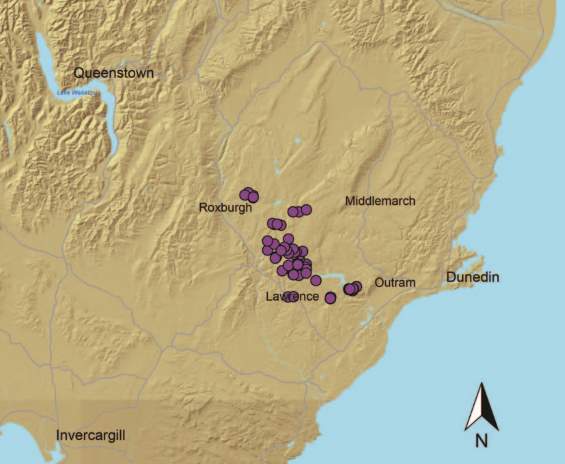Dusky galaxias
Introduction
Dusky galaxias have dark- and light-brown halo markings over a light-brown body. They are difficult to spot during the day.With only 25 known populations, dusky galaxias are becoming increasingly rare. Their total remaining habitat can fit in an area less than 7 hectares.
Classified as ‘Nationally Endangered’ they share the same threat status as the rare South Island kākā.
Habitat
Dusky galaxias (Galaxias pullus) or duskys, as they’re known, are found in eastern areas of Otago in small tributaries of the Waipori River surrounding Lake Mahinerangi. A few populations have been discovered in pockets of the Clutha and Taieri rivers.
They make their home under banks and amongst the gravels of very small headwater streams small enough to step across. These streams are typically about 400–1000 m above sea level and are surrounded by vegetation such as tussock, mānuka, hebes and coprosma.
Features
Features of dusky galaxias include:
- dark- and light-brown halo markings over a light-brown body; these markings are disjoined down the back, giving them the appearance of mismatched wallpaper
- typically grow to up to 150 mm in length
- difficult to spot during the day
- feed on small stream invertebrates such as mayflies and stoneflies
- spawn in spring (October to November), laying tiny 2 mm eggs during flood flows in streamside vegetation or small ‘caves’ in stream banks
- they can live up to 20 years.
Threats
Over the last decade we have lost 25% of known dusky populations. This can be directly linked to the spread of sports fish (trout and brook char), which eat galaxiids; and changes in land use such as stock access to streams, reduction of native vegetation, land development and forest harvesting.
These land use changes impact on the streams in which galaxiids live, increasing sedimentation, changing natural flows through water abstraction, and reducing the amount of habitat available for spawning.
Find out how you can help non-migratory galaxiids.
Distribution
This map shows the known locations of dusky galaxias, as at 2013.

Source: New Zealand freshwater fish database


